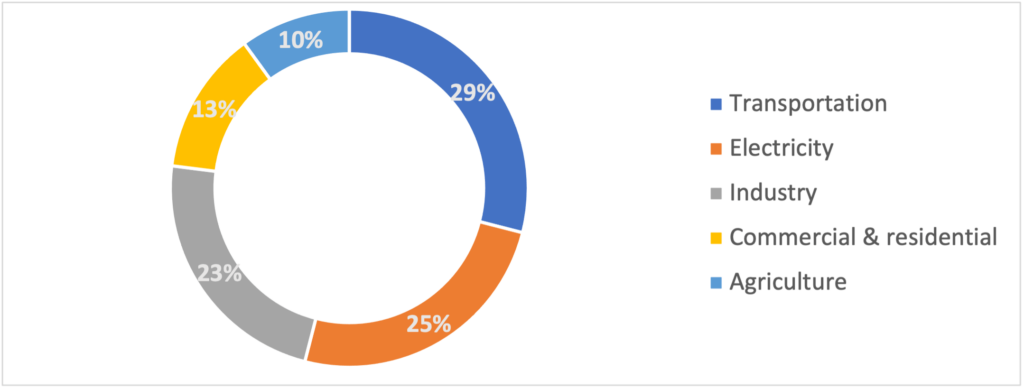Welcome to Sustainability 101. The purpose of this blog post series is to define what we mean when we mention sustainability and reach a shared understanding of common terms. The series will cover:
- Greenhouse gas (GHG) emissions—Definitions and scopes
- Sustainability reporting—standards and trends
- Circular economy, part I—What is zero waste?
- The product lifecycle—Sustainability and the supply chain
- Chemicals of concern—Moving beyond RoHS
- Water management—Global problem, local solutions
- Circular economy, part II—Improving e-waste
For some members of the 3D InCites community, addressing GHG emissions, resource use, and energy consumption are central aspects of your job. If you are steeped in that world, the information in these posts will be familiar. That said, I hope you can gain insight from the examples, which might even feature your workplace.
Many readers may not even be aware of where their employer stands on emissions or energy use. Experts in engineering, marketing, or business strategy don’t always think about how sustainability relates to their work. I encourage you to read the entire series and ask questions.
What are GHG emissions?
Discussions of carbon emissions and GHG emissions have become commonplace. It may seem unnecessary to define these terms because we all “know” what they mean. Do we? I think it is worth making things clear.
GHGs are compounds that contribute to global warming (aka climate change) by absorbing infrared radiation coming from the sun or reflected from the earth’s surface. Instead of escaping into space, the radiation remains in the atmosphere and contributes to the greenhouse effect.
Much like a greenhouse warms the air inside so that plants are protected from cold outdoor temperatures, the earth’s atmosphere keeps our planet at a livable temperature. We need some of the sun’s energy to be absorbed and stay in the atmosphere.
The problems occur when unusually high levels of GHGs in the atmosphere affect the natural cycle. The burning of fossil fuels creates excessive quantities of GHGs. The exponential growth of GHG levels in recent decades has created an imbalance in the system. As a result, average global temperatures are rising.
GHGs include carbon dioxide (CO2), methane (CH4), hydrofluorocarbons (HFCs), and several other classes of compounds. Since each GHG contributes to global warming at a different rate, emissions are converted to a CO2 equivalent (CO2e). For example, methane is at least 25 times more potent than CO2, meaning that a ton of CH4 contributes as much to global warming at 25 tons of CO2. HFCs range from tens to thousands of times more potent than CO2, depending on the specific compound.
Why should you care?
Perhaps the answer to why care about GHG emissions is obvious: the future of humanity is at stake. I hope you care about leaving a healthy environment for your children and grandchildren and generations to come. But I’ve got some bad news: your workplace is part of the problem.
The largest contributors to GHG emissions are transportation, electricity, and industry. The data in the chart below are from the EPA and represent US emissions in 2019. Globally, agriculture comprises a much larger segment, but transportation, electricity, and industry still make up 60% of emissions.

If you work at a company in the semiconductor manufacturing industry, your employer contributes to emissions in all three of the most prominent categories. There is some good news. You have the power to effect change that will reduce your company’s role in accelerating climate change.
Before you can do anything, however, you need to understand the problem and see examples of solutions. This blog post is a starting point.
Scope 1, 2, and 3 emissions
GHG emissions are grouped into three categories, or scopes. Comprehensive sustainability reporting, covered in part 2 of this series, requires companies to report on emissions for all three scopes.
Scope 1 covers direct emissions from within a company’s operations. The emissions come from sources that the company owns. For manufacturers, much of the emissions are those related to running the equipment that makes the products. All the equipment in a fab and all the manufacturing steps contribute to GHG emissions. Transportation in company-owned vehicles also falls under Scope 1.
Scope 1 emissions are within a company’s direct control and are, therefore, the most obvious place to start when looking to reduce emissions. For example, Intel lowered Scope 1 emissions by reducing the use of fluorinated gases in its production process.
Scope 2 covers energy purchased from sources outside the organization. Primary sources of Scope 2 emissions are electricity and natural gas purchased from local utility companies.
Businesses that install solar panels on their buildings or create purchase agreements with utilities to power their facilities with renewable energy instead of fossil fuels will reduce their Scope 2 emissions.
Scope 3 encompasses all indirect emissions except for those covered in Scope 2. This includes both upstream emissions from vendors and downstream emissions from customers.
Again, using Intel as an example, Scope 3 includes emissions from the purchase of materials used in manufacturing, leased vehicles and employee commuting, and energy usage of its products. This last category far outweighs any other. Emissions from product usage are over five times those from Scope 1 and Scope 2 combined.
For fabless semiconductor companies, Scope 3 emissions will comprise an even greater fraction of total emissions than for companies that manufacture chips or modules in-house.
Science-based targets
The first step in reducing GHG emissions is to measure them. With a baseline in place, companies can set targets for improvement. These targets, however, should not be arbitrary.
Science-based targets are those designed to keep global temperature increases to 1.5-2.0 °C above pre-industrial levels. A goal of 1.5 °C is best. This is the level of warming required to avoid catastrophic changes in the climate that result in flooding, fires, and extreme storms. The world is already experiencing these effects, but by mitigating GHG production, we can avoid even more severe problems.
Companies often report on emissions intensity—emissions per chip manufactured or per million dollars of revenue. While reducing emissions intensity sounds good, the positive effect is often wiped out because of growth. Reducing emissions per chip by 25% but producing twice as many chips per year will not decrease total emissions.
In the semiconductor industry, ST Microelectronics stands out. The company has committed to cut its absolute Scope 1 and Scope 2 emissions in half by 2025, compared to baseline values in 2018. A commitment to reduce absolute emissions, rather than merely emission intensity, is a big deal. Such action is necessary to meet science-based targets.
Until the entire semiconductor supply chain commits to science-based targets, significant absolute Scope 3 emissions reductions will be hard to achieve. Policies like required environmental performance from suppliers help move the needle. Companies that make chemicals, components, or equipment will need to reduce their GHG emissions to stay competitive.



















